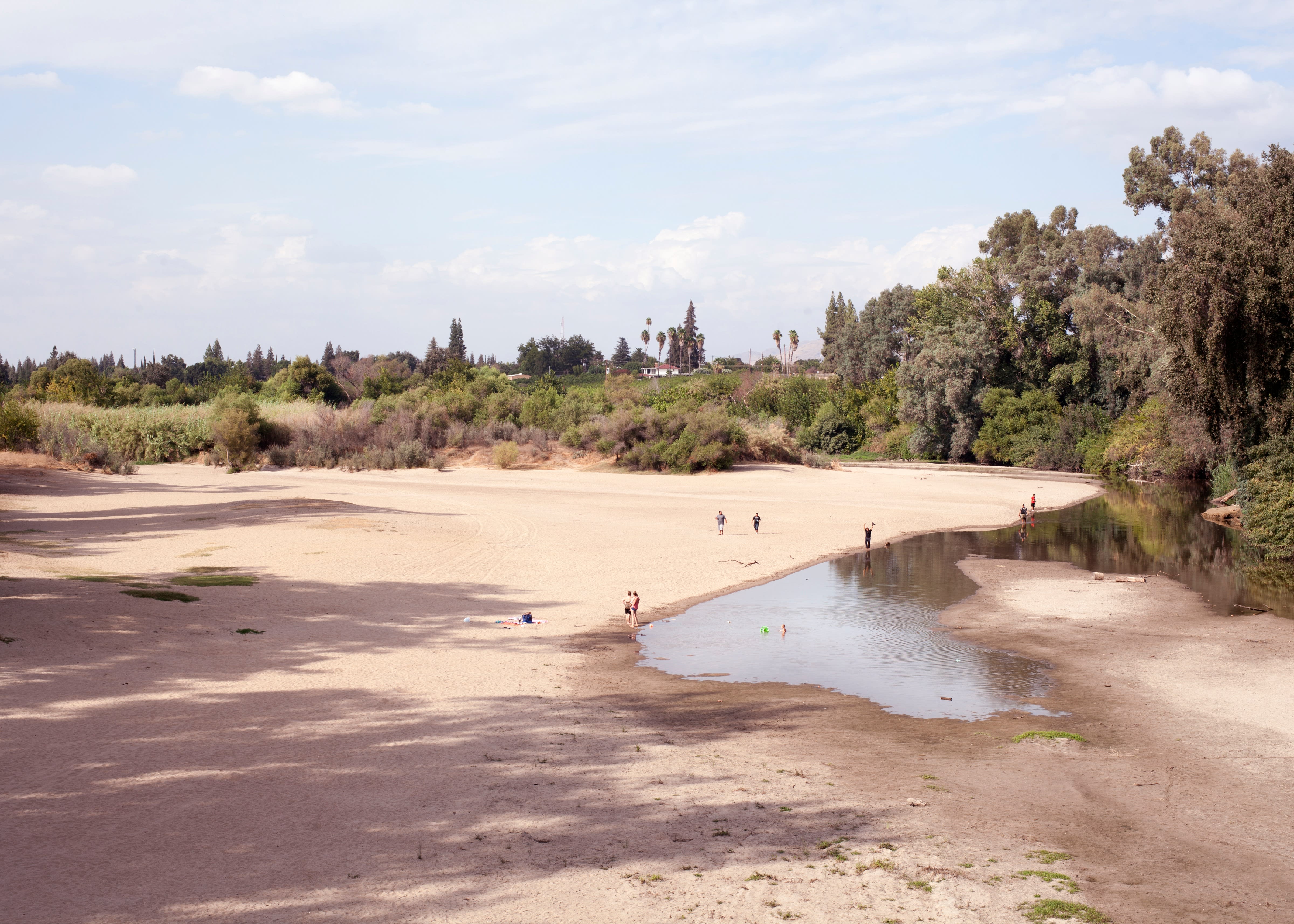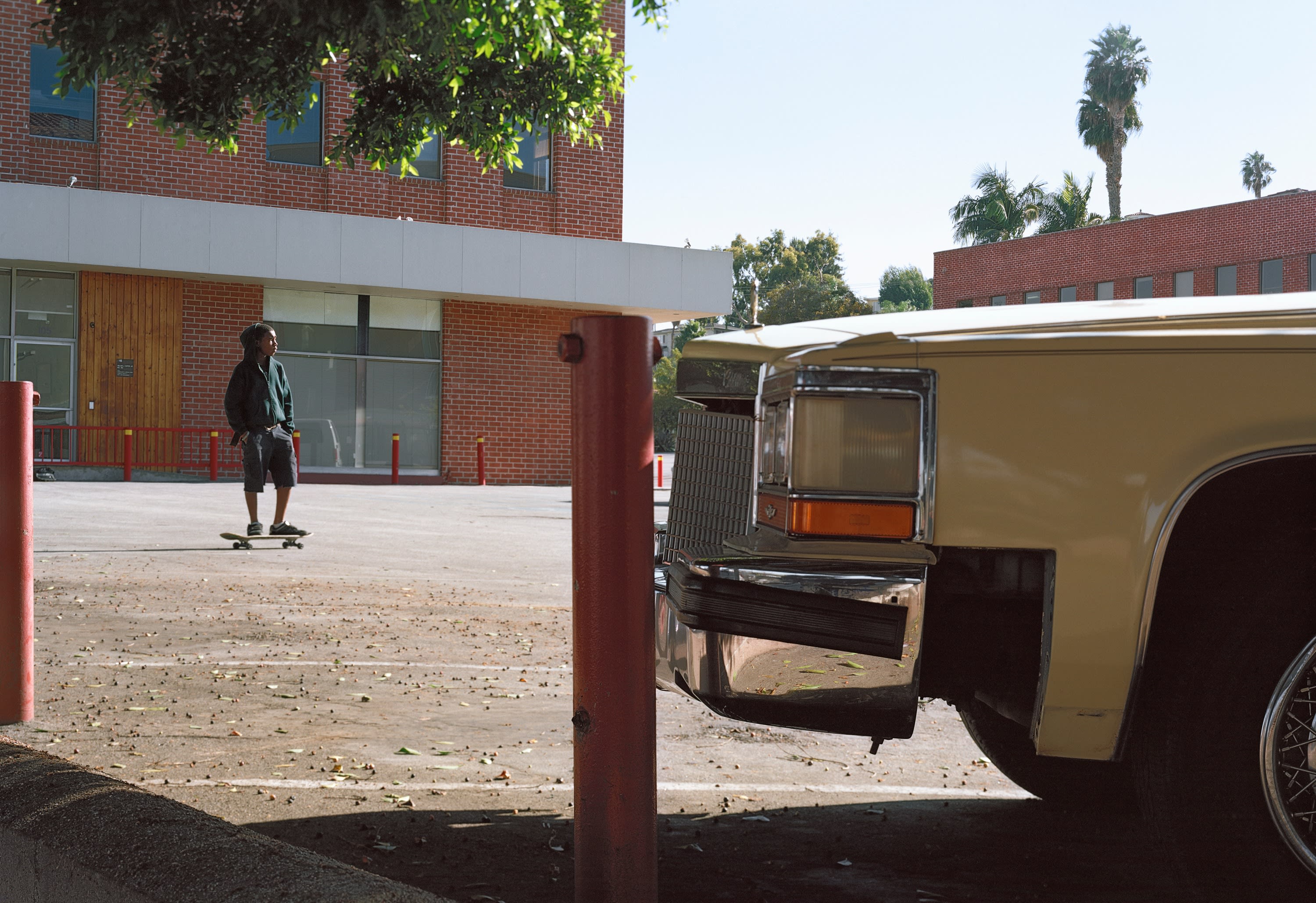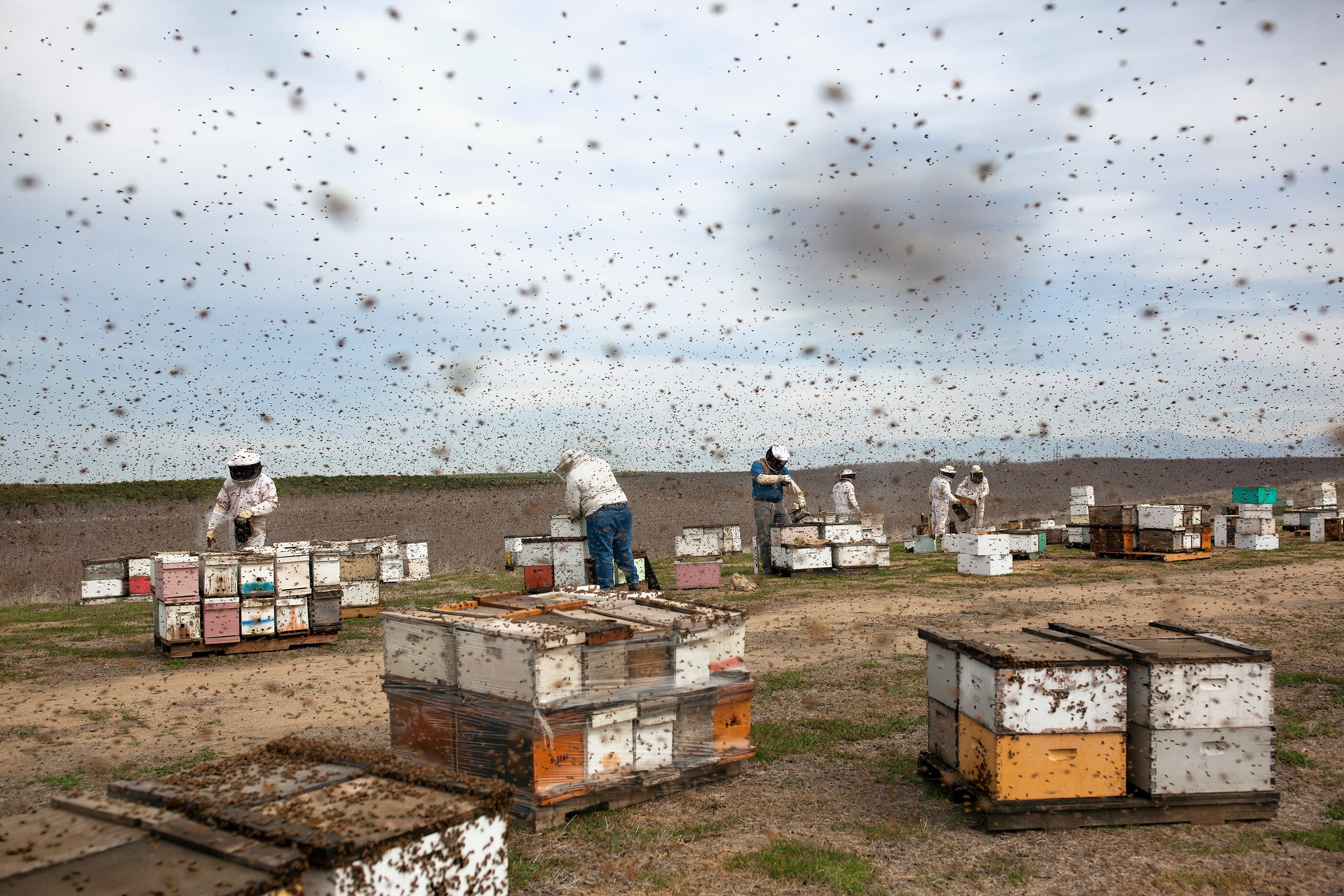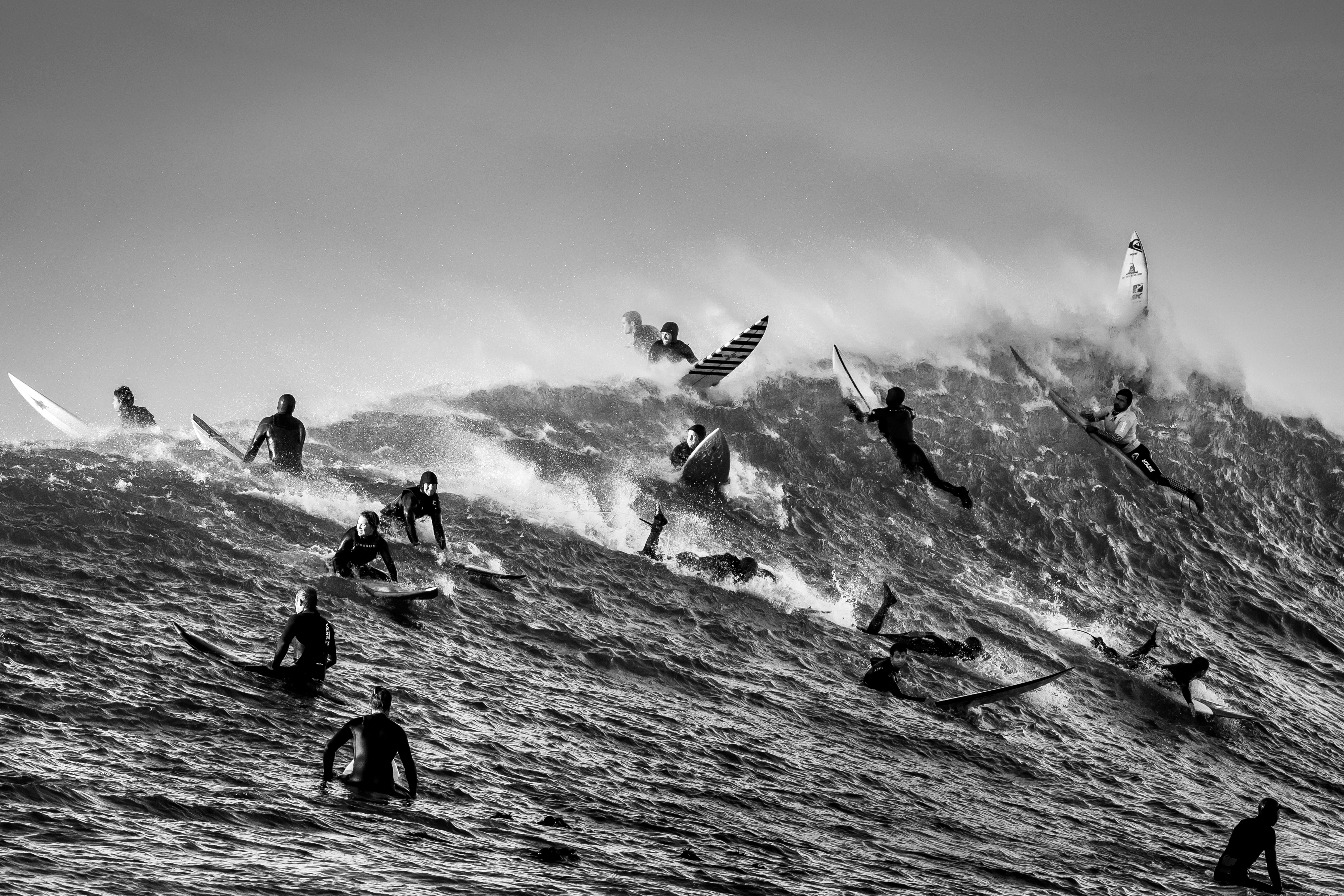
Kevin Cooley, Screen time, Opera Fire, 2017.
The School of Visual Arts will always be a New York City institution, but outside of the city's greater metropolitan area, there may be no place more SVA alumni call home than California. This makes sense: The state has long had a reputation as a destination for creative visionaries, and its well-known entertainment and technology industries have an endless need for artists, designers and filmmakers.
For its fall/winter 2019 edition, SVA's magazine, Visual Arts Journal, asked alumni and faculty photographers to contribute work they had made in and about California, all capturing different aspects of one of America's most diverse and populous states. Jacqueline Bates (MFA 2009 Photography, Video and Related Media; BFA 2004 Photography), the award-winning photography director of The California Sunday Magazine, served as a guest editor.
"As a native New Yorker getting off the plane for the first time in California, I was struck by one thing immediately: how different the light is," she says. "It feels and looks different out here—the West seems open to possibility. The climate is diverse and so are the stories that we tell.
"This portfolio of work shows firsthand the wide array of stories that are set here: from the deserts to the oceans, from small and personal anecdotes about what it means to be a Californian to larger stories that impact our criminal justice system, the environment and the way we live."
California is plagued by wildfires, and artist Kevin Cooley (MFA 2000 Photography and Related Media) has photographed several of them since moving to Los Angeles. Cooley's work has appeared in many solo and group exhibitions, and is in the collections of the Los Angeles County Museum of Art, Museum of Fine Arts Houston, and Solomon R. Guggenheim Museum in New York, among other institutions.
kevincooley.net / @kevincooley_

Sarina Finkelstein (MFA 2004 Photography, Video and Related Media) spent five years visiting and photographing modern-day prospectors and historical gold-mining towns in California for her book The New Forty-Niners. The work, which won a PDN Photo Annual Award, showcases the enduring natural beauty of California's wilderness, as well as the undying dreams of discovery and instant fortune, more than 160 years after the original gold rush brought waves of hopefuls to the area.
John Francis Peters, People hang out and swim in what's left of the Kings River, Central Valley, CA, from "California Drought," 2015.
Photographer John Francis Peters (BFA 2002 Graphic Design) moved to Southern California in 2012 and his work often takes as its subject regional issues of international significance: the itinerant community in San Diego, California's historic drought, the U.S./Mexico border. Peters' work has appeared in such publications as The California Sunday Magazine, The New Yorker and Time, and in numerous group exhibitions.
jfpetersphoto.com / @jfpetersphoto
When Maureen Drennan (MFA 2009 Photography, Video and Related Media) began work on "Meet Me in the Green Glen," her nine-year project documenting life on a Northern California marijuana farm, the substance was still illegal in the state. Even following its legalization, the business of growing and selling the crop continues to be murky, full of isolation and financial precariousness. Drennan, who lives in New York City, is currently working on a monograph of the series, among other projects.
maureendrennan.net / @maureenrdrennan
Isaac Diggs, image from Middle Distance, or the Anxiety of Influence: Photographs from Los Angeles (Kris Graves Projects, 2019).
The work of BFA and MFA photography faculty member Isaac Diggs explores architecture and urban landscapes, with a special focus on what he calls "port cities that are frayed around the edges, cities where the cultural landscape refracts our anxieties around race, sex or class."
Star Montana, Ruby, from "I Dream of Los Angeles," 2017 – present.
Star Montana (BFA 2013 Photography) grew up in Los Angeles' Boyle Heights neighborhood, and its predominantly Mexican American community has served as inspiration for much of her work. Her projects have included the ongoing "I Dream of Los Angeles," featuring portraits of Boyle Heights residents, and 2019's "By the rivers, I stood and stared into the Sun," which combined original photos with archival images to create a visual narrative of her family history. In 2020, Montana will be an artist-in-residence at the Robert Rauschenberg Foundation.
Ilona Szwarc, Will Nissen's queenless beehives north of Bakersfield, California, from "The Super Bowl of Beekeeping," The New York Times Magazine, August 15, 2018.
The work of Los Angeles-based artist and photographer Ilona Szwarc (BFA 2013 Photography) has appeared in such publications as National Geographic, The New York Times, The New Yorker and Vogue. Szwarc's art explores female identity construction and cultural dysphoria; her editorial assignments in California have taken her from the almond orchards of Bakersfield to a Santa Barbara location shoot for MTV’s The Hills. Her most recent solo exhibition, "Unsex me here," was on view at the Make Room gallery in Los Angeles this past spring.
ilonaszwarc.com / @ilonaaszwarc
Dina Litovsky, Surfers at Maverick's, one of the world's two most important big-wave breaks, in Northern California, from "The Fight for Gender Equality in One of the Most Dangerous Sports on Earth," The New York Times Magazine, February 7, 2019.
The photographs of Dina Litovsky (MFA 2010 Photography, Video and Related Media) document group interactions in a variety of public and private settings, from political conventions to the Westminster Dog Show to the nightlife of Manhattan's Meatpacking District.
dinalitovsky.com / @dina_litovsky

"The Golden State" project by Amy Elkins (BFA 2007 Photography) consists of 26 composite images—one for each letter of the alphabet—comprising all the mug shots of California’s death row inmates, who at the time numbered 746. California has the largest death-row population in America, and though its current governor, Gavin Newsom, suspended executions earlier this year, the fate of these men is still unknown: capital punishment can only be abolished in the state via popular vote. Elkins’ project aims to illustrate the racial bias of the justice system, and the ways in which imprisonment negates individual identity.
amyelkins.com / @thisisamyelkins
Zsolt Kadar (BFA 1990 Photography) moved to Los Angeles in 2001, and much of his recent work has dealt with the renewal and regeneration of the city’s buildings, infrastructure and landscapes—a metaphor, he says, for California's reputation as a place of "constant reinvention and transience."
A version of this article appears in the fall/winter 2019 Visual Arts Journal.









